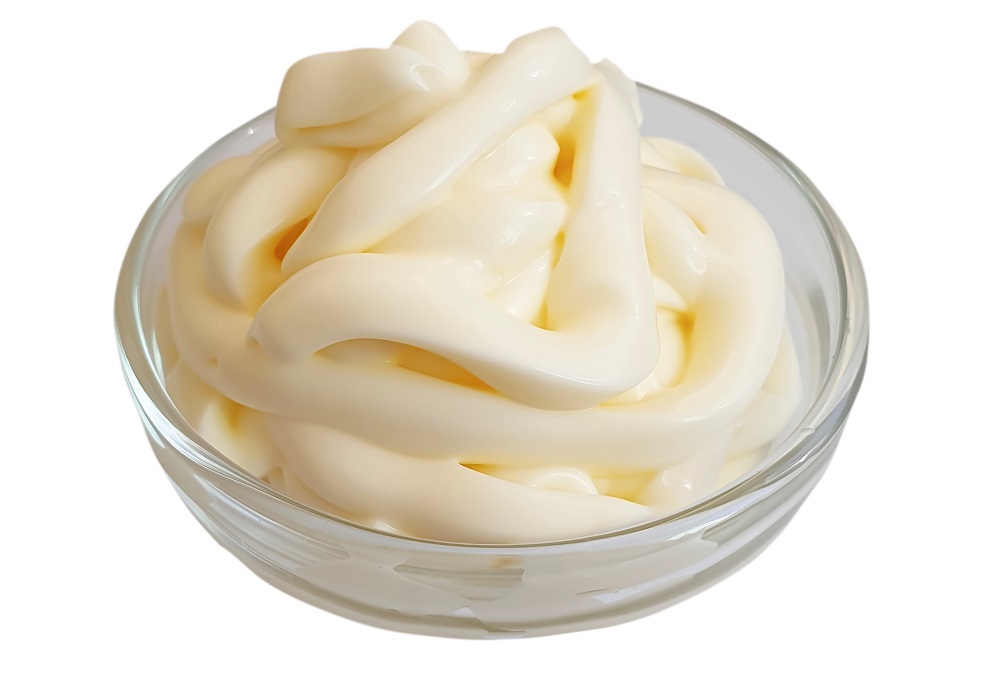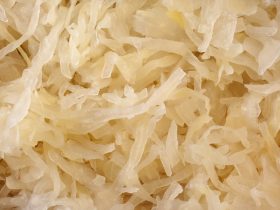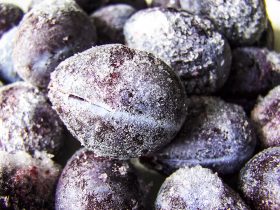Mayonnaise is a popular dressing often served cold. It has various food applications in households and restaurants, such as dressings in salads, spreads in slices of bread, as a thickener compound, or even as a simple dip for french fries. For other consumers who prefer alternative condiments, mayonnaise is still often used as a base for the more favored spreads like tartar sauce and french rouille. With its wide acceptance, it is not surprising why consumers would want to freeze mayonnaise for a longer shelf-life.
Unfortunately, freezing homemade mayonnaise does not preserve its quality. Freezing, especially for extended periods of time, affects its emulsifying agent, and ultimately alters the taste and consistency of mayonnaise. And freezing injuries are permanent, with its effects evident only after thawing.
Emulsifying agents present challenges to freezing food. Ironically, an emulsifying agent, such as egg yolk, is a necessary ingredient for mixtures like mayonnaise because they blend the immiscible ingredients together. On the other hand, store-bought mayonnaise use additives to extend its shelf-life. But for opened bottles of mayonnaise, storage in a fridge is often the best route.
Key Ingredients of Mayonnaise and Their Inherent Properties
Among the key ingredients of mayonnaise are oil, acetic or citric acid, and an emulsifier. The acetic or citric acid may either be in the form of vinegar, lemon, or lime juice — regardless of these 3 options, this ingredient will have a large percentage of water content.

Oil and water are two types of liquids that do not bond together because of their innate properties. And to produce a stable emulsion, such as mayonnaise, an emulsifier (usually egg yolk for mayonnaise) is necessary.
The Polarity of Oil and Water
The ability of liquids to form bonds with other liquids will depend on the polarity of both substances. Simply put, polarity determines the attractiveness of a substance to another substance. A substance can either be hydrophilic or hydrophobic — from the Greek word hydro, meaning “water. “
Hydrophilic substances bond well with water, while hydrophobic substances repel water. Hydrophilic and hydrophobic are also known as polar and nonpolar substances, respectively.
Oil is an excellent example of a nonpolar molecule (hydrophobic substance). When there is an attempt to mix oil and water, oil molecules associate with other oil molecules, and the bond repels water molecules from merging with them. Introducing an emulsifying agent to the mix should remedy the problem.
An Emulsifier or Emulsifying Agent
An emulsion is the fusion of two immiscible (i.e., incapable of mixing) liquids. These two immiscible liquids are bonded together by the emulsifying agent, also called the emulsifier, where one liquid is dispersed as microscopic droplets into the other liquid. The distinction between the two liquids is visible on a microscopic level.
Emulsifiers are amphiphilic compounds — Amphi is a prefix of Greek origin, meaning “two” or “on both sides.” This means an emulsifier has dual properties that allow it to form connections with both oil and water.
Egg yolk is one of the most commonly used emulsifying agents. In the case of mayonnaise, egg yolk acts to bind the oil ingredient with either vinegar, lemon, or lime juice — whichever ingredient is used for the particular mayonnaise.
But while the emulsifying agent is the solution for the tension between oil and water, the emulsifying agent is also the cause of the problem when freezing mayonnaise.
Freezing and Thawing Mayonnaise
The emulsifier in mayonnaise is deactivated when mayonnaise is subjected to extremely low temperatures. When the emulsifier disconnects with the two immiscible liquids, the stable emulsion is destroyed and both oil and water separate from each other.
The adverse effects of freezing mayonnaise will be visible after the thawing process. When the mayonnaise is thawed, specifically those with demobilized emulsifiers from prolonged freezing, the two immiscible liquids defrost separately. This separation of ingredients is visible as liquid sitting on top of the mayonnaise base. The uncoupling is a sign of deterioration in quality and taste.
Risk of Microbial Growth
Moisture is a breeding ground for germs and bacteria. As the mayonnaise is left to thaw, the risk of promoting microbial growth becomes high.
The optimal condition for microorganisms to grow and multiply is reached as the mayonnaise approaches room temperature. So as the thawing process then continues and completes, the chances of bacteria growth also increase.
Mayonnaise with Additives and Stabilizers
As an alternative to homemade mayonnaise though, store-bought mayonnaise typically includes additives and stabilizers for prolonged shelf-life. This is particularly important for mass-produced mayonnaise manufactured by large makers. The additives and stabilities are components that make the after-freeze and thaw conditions of commercial mayonnaise generally more acceptable than the homemade ones.
Having said that, prolonged periods of freezing may still result in poor quality mayonnaise, regardless of the ingredients used or even the manner of preparation.
But depending on its state after freezing and thawing, particularly the extent of separation between the main ingredients, store-bought mayonnaise might be remedied. By removing the excess water and stirring what is left, you might be able to achieve the desired consistency for mayonnaise. Also, consider adding egg yolk (our selected emulsifying agent) as needed — specifically when the oil and water parts fail to mix.
Mayonnaise Comprised of Organic Ingredients
On the other end of the spectrum, some homemade mayonnaise recipes require the use of organic ingredients. Some examples include the use of organic egg yolks and organic vinegar. The presence of these organic components prevents long storage, restricting organic mayonnaise’s shelf-life to not more than five days. Accordingly, organic mayonnaise is typically prepared for immediate, or near-term, consumption only.
Optimal Storage Conditions for Mayonnaise
The known effects and implications of freezing mayonnaise mean consumers are left to consider alternate storage solutions. For mayonnaise, particularly opened bottles or cans of store-bought mayonnaise, this means storage in the fridge. Mayonnaise is usually served cold anyway.
That said, the additives and stabilizers that are present in shelf-stable commercially produced mayonnaise enable the mayonnaise to stay at room temperature for extended hours even after opening, according to the United States Department of Agriculture.
But this statement only holds true for store-bought mayonnaise. This is not the case for homemade mayonnaise. For homemade mayonnaise with no additives and preservatives, storage in a fridge typically lasts about a week. Due to their short shelf lives, preparation in small portions is generally recommended — with the portions amounting to the expected consumption.





Hi, I'm Dom
Dom Eats was started to help other people fall in love with food. While cooking can feel intimidating, it doesn't have to be.